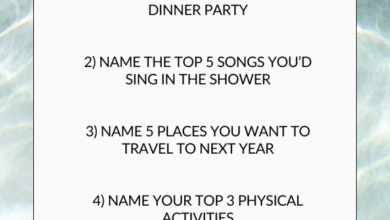Mini Highland Cow: The Adorable Fluffy Cattle Taking Over Hobby Farms
Introduction: What Exactly is a Mini Highland Cow?
If you’ve been spending any time scrolling through farm life TikTok or Instagram lately, chances are you’ve seen a fluffy, golden-brown puffball with horns standing in a green pasture. Meet the mini Highland cow — the ultimate mix of cute, cuddly, and country charm.
A mini Highland cow is exactly what it sounds like: a smaller version of the classic Highland cattle breed, known for their long horns, shaggy coats, and gentle personalities. Originating from the rugged Scottish Highlands, these cows are famous for being incredibly hardy, good-natured, and visually striking. Now, with the rise of hobby farming and people wanting low-maintenance livestock that also serve as pets or lawnmowers, mini Highlands are having a serious moment.
But don’t let the word “mini” fool you — while they’re smaller than standard cattle, they’re still very much cows, and they come with their own set of needs and quirks. In this article, we’ll explore everything you need to know about mini Highland cows — from their history and characteristics to how to care for one and whether they’re the right addition to your mini-farm or backyard homestead.
A Brief History of the Highland Cow: From Scotland to Small Farms
Highland cattle have a long, proud lineage that dates back centuries. They’re one of the oldest registered cattle breeds in the world, with origins in the Scottish Highlands and Western Isles. These cows were bred to withstand the harshest conditions — cold, wet weather, rocky terrain, and sparse vegetation. Their thick double-layered coats and hearty constitutions made them ideal for survival in places where other cattle wouldn’t last a week.
Traditionally, Highland cattle were kept for both their beef and their ability to thrive in less-than-ideal grazing conditions. Their meat is lean, flavorful, and considered a premium product due to the breed’s slow growth and natural diet.
So how did we get from rugged Scottish mountain cows to the mini-sized fluffballs lounging around on American hobby farms?
Selective breeding is the answer. Breeders have taken the smallest Highland cows and bred them over generations to create a more compact version — while retaining all the charm, fluff, and friendly demeanor of the full-sized original. Mini Highlands typically stand between 36 and 42 inches tall at the shoulder, making them much more manageable for small properties and first-time livestock owners.
Characteristics and Temperament: Why Everyone Loves Mini Highlands
Fluff, Horns, and Heart
One of the biggest reasons mini Highland cows have surged in popularity is their looks. Let’s be honest: they’re adorable. With their long, shaggy coats that come in colors ranging from deep red to cream, their iconic curved horns, and those soulful eyes, it’s hard not to fall in love at first sight.
But they’re not just a pretty face. Mini Highlands are known for their sweet, calm temperament. They’re incredibly docile, especially when handled regularly from a young age. Many owners even describe them as “dog-like” in their behavior — following their humans around the pasture and enjoying a good scratch behind the ears.
Built for All Seasons
Thanks to their thick double coat (a long outer layer and a soft undercoat), these cows are naturally insulated against cold and wet weather. This makes them a great choice for colder climates. In hot regions, they’ll need plenty of shade and access to fresh water, but overall, their hardy nature means they’re pretty adaptable wherever you live.
Social Creatures
Mini Highland cows are herd animals and do best with companions. If you’re thinking of getting just one, you’ll want to reconsider. At minimum, you should have two so they don’t get lonely or stressed. They get along well with other livestock, too — goats, donkeys, and even horses can make great pasture mates.
Daily Life with a Mini Highland Cow
Space and Shelter Needs
Despite their smaller size, mini Highlands still need space to roam. A general rule of thumb is about 1 to 2 acres per cow, depending on your climate and how much grazing land is available. They’re natural foragers and prefer to graze on grasses, weeds, and shrubs, which makes them great natural lawnmowers.
When it comes to shelter, nothing fancy is required — just a simple three-sided structure or barn where they can escape from the wind, rain, and hot sun. Because they’re so hardy, they often prefer being outside year-round, but having access to dry bedding and shade is still essential.
Feeding and Nutrition
Mini Highland cows are low-maintenance eaters. In the summer, they can mostly live off of pasture, supplemented with a mineral lick to ensure they’re getting all their nutrients. In winter or in drought conditions, you’ll need to provide hay. They also appreciate fresh water (a must at all times) and occasional treats like carrots or apples.
It’s important not to overfeed them, though. Just because they’re cute doesn’t mean they should be fat. Obesity in cattle can lead to health problems, even in miniature breeds.
Grooming and General Care
That fluffy coat doesn’t manage itself! While mini Highlands don’t require daily grooming, a weekly brush — especially in shedding season — helps keep their coat clean and reduces matting. Most owners say this is actually one of the most enjoyable parts of cow ownership. It’s a bonding experience, and the cows love the attention.
As with any livestock, regular hoof care, vaccinations, and deworming are part of the routine. Partnering with a livestock vet or large-animal specialist is key to keeping your mini cows healthy.
Are Mini Highland Cows Right for You?
Things to Consider Before Getting One
It’s easy to be enchanted by pictures of mini Highland calves lounging in flower fields, but owning one is a commitment. These animals live for 15 to 20 years, sometimes longer. They’re not like getting a pet rabbit or backyard chickens. You’ll need to be prepared for:
- Regular feeding and care
- Veterinary checkups
- Adequate fencing and shelter
- Having enough land
- Managing breeding (if you choose to go that route)
They also aren’t ideal for apartment living or urban areas — these cows need space and interaction to thrive.
Cost of Ownership
Mini Highland cows are not cheap. A calf can cost anywhere from $3,000 to $10,000 depending on lineage, size, and color. Then there’s the cost of fencing, shelter, feed, vet care, and possible breeding. It’s definitely more of a lifestyle investment than a budget-friendly pet.
However, many owners say it’s worth every penny. Whether it’s for the joy of animal companionship, creating a small business (breeding or agritourism), or simply living the rural dream, mini Highlands offer something special.
Final Thoughts: The Mini Cow with Maximum Charm
Mini Highland cows are more than just a cute face on social media. They’re intelligent, calm, hardy animals that make great additions to small farms, homesteads, and hobby ranches. With the right care, space, and attention, they can be both productive and affectionate companions.
If you’re looking to dip your toe into the world of livestock or expand your pasture with something truly unique, the mini Highland cow just might be your perfect match. Just be ready — your friends and neighbors are probably going to want selfies with them, too.



